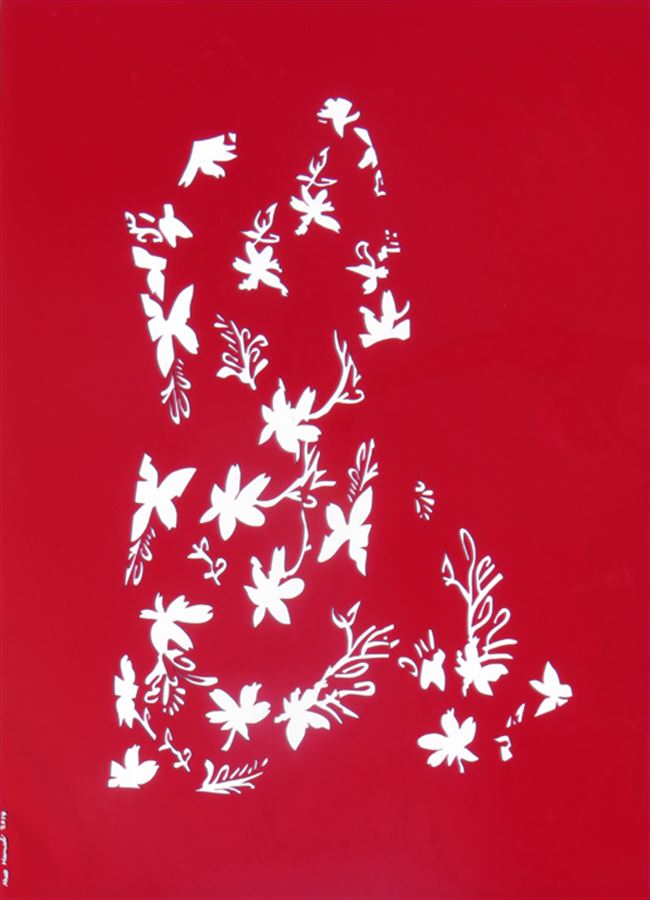‘The Missing Tile Syndrome’ is the name of an art exhibition by artist Ahoo Hamedi, currently on display in Homa art gallery in Tehran.
The title refers to a preoccupation with imperfections and anomalies. Picture a large beautiful tile mosaic where out of the 1,000 tiles, 10 are missing. Most people would enjoy the beauty of the mosaic, but then comment or inquire about the 10 missing tiles. This concept has been adopted by Hamedi in her exhibition where she has deliberately cut out the subject matters from her art pieces. It is the absence of the subject matters that makes their presence perceptible.
The art pieces are composed of transparent plastic sheets (plexiglass) in which the shapes, mostly of insects and female attire, have been carved out, thereby creating a silhouetted feature on the white background surface. The plastic sheets have monochromatic but vivid colors. Hamedi uses simple pared-down elements in her art work, therefore approaching minimalist style in her art.
Most art works in this gallery have very simple designs; for example the piece titled ‘bat’ depicts a vague shape with two ears carved out of the plexiglass sheet and another work titled ‘farm’ pictures a repeated pattern (motif), which makes Hamedi’s art look more minimalist.
Fine Details
Not all art works in her collection are simple shapes though, in one of her art works titled ‘king of heaven’ a fly is portrayed with fine details of eyes, wings and legs. Another piece titled ‘Nagazaki’ stands out with its unique portrayal of female floral attire (resembling Japanese designs) wherein the flowers are missing from the picture and the dress boundary is outlined by curtailed flowers.
There is another item in the gallery depicting female attire titled ‘the unbearable lightness of being’, a name borrowed from a postmodern novel written by Czech author Milan Kundera. In this novel the term is used in contrast with Friedrich Nietzsche’s concept of eternal recurrence (the idea that the universe and its events have already occurred and will recur ad infinitum) and posits the alternative: that each person has only one life to live and that which occurs in life occurs only once and never again, thus the ‘lightness’ of being.
Hamedi was born in 1981 and graduated from Azad University in Tehran in 2005. In her art works, she generally portrays Iranian women. This is her fifth solo exhibition and will be on display until November 2.


